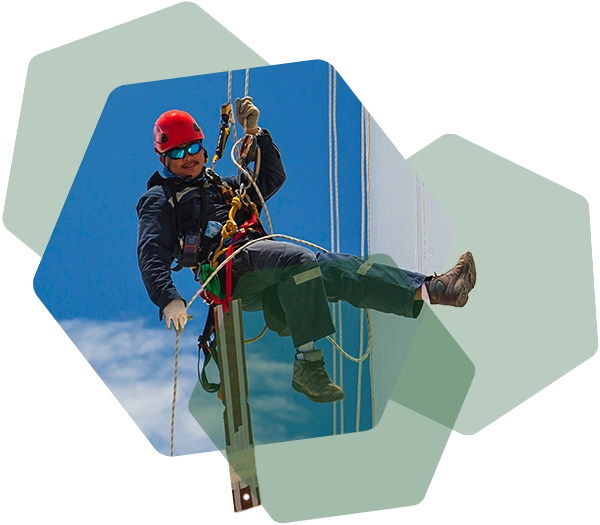SafetyHQ®:
Construction Safety Software
SafetyHQ is the construction safety app that provides contractors with the tools and resources they need to effectively manage their safety programs and keep their workers safe.
SafetyHQ Features

Streamline Your Construction Safety Programs
SafetyHQ is more than just a construction safety app. It's a complete construction safety management software that helps contractors:
- Better manage their health and safety programs
- Identify and control health and safety risks
- Keep workers informed and jobsites compliant
Toolbox Talks: Keep Workers Informed and Engaged
Make safety a priority on your jobsite by discussing hazards and safe work practices with SafetyHQ's customizable toolbox talks.
-
Create and deliver engaging safety meetings accessible from any device
- Hundreds of pre-built meeting guides and the ability to customize your own
- Automatic notifications to remind workers to complete weekly safety topics
- Attendance tracking and notification alerts to ensure workers have completed safety meetings
- Completion tracking and reporting for documenting and analyzing your safety program


Jobsite Hazard Assessments and Inspections: Identify and Control Risks
Keep your workers safe and your jobsites compliant by conducting regular inspections using SafetyHQ's customizable inspection forms and assessment reports.
- Customizable electronic inspection forms that can be easily modified and updated
- Real-time reporting and analytics to help you identify and address potential jobsite hazards and risks
- Customizable PDFs for sharing inspection results and findings with your team and your clients
- Easy documentation and storage for referencing and reporting
Certification Tracking: Stay Compliant and Proactive with Training Management
SafetyHQ's certification tracking helps contractors manage employee training and certifications, ensuring they’re always up to date. SafetyHQ lets contractors easily upload and maintain records of workers' training and certifications and receive notifications of upcoming expiration dates. With SafetyHQ's certification tracking, contractors get:
-
Centralized, secure storage for all training and certification records
- Easy upload and management of training and certification files
- Automatic notifications for certification expiration dates
- Ability to share training and certification information
- Elimination of paper files and spreadsheets


Safety Datasheet Library: Access Millions of Product Documents
Safety Data Sheets (SDS) or MSDS (Material Safety Data Sheets) are documents required by law to be provided by manufacturers of chemicals and other construction materials. With SafetyHQ’s safety datasheet library, you’ll have access to a database with over 2.4 million SDS, covering a wide range of construction materials. Some of the key features of SafetyHQ's safety datasheet library include:
- Easily upload new safety datasheets and keep your library up to date
- Automatic audits to ensure that your safety datasheets are accurate and current
- Bookmarking and easy retrieval of commonly used SDS
- The ability to eliminate bulky binders and messy paperwork
- Access your SDS from anywhere
SafetyHQ integrates with:
FOUNDATION®, ExecutiveHQ, CrewHQ, ProjectHQ® and TakeoffHQOther Apps to Help You Work
Improve your workflow with America’s #1 Construction Back-Office Platform so your team can work at maximum efficiency and let you focus on what’s important.
ExecutiveHQ
Simplify your reporting with our executive dashboard that offers features like project summaries, WIP schedules and comprehensive budget detailing.
CrewHQ
Better manage schedules and administration with user-defined certification filters, at-a-glance crew assignments and real-time alerts for job changes.
TakeoffHQ
Streamline your estimating and takeoff processes with features like cloud-based document management, customizable assemblies and an easy-to-use interface.


I’m so pleased with the ease of use that SafetyHQ offers and the results we have achieved. Our safety program has improved profoundly and SafetyHQ has been there with a quick response whenever we needed something.”
Jay Radaker – Safety Director
Scalo Group of Companies
Recommended Reading
Educational resources to help build your skills and business.
See What HQSuite
can do for You
Schedule a personal tour of HQSuite to see how our apps streamline your back office
and improve your business’s productivity!



